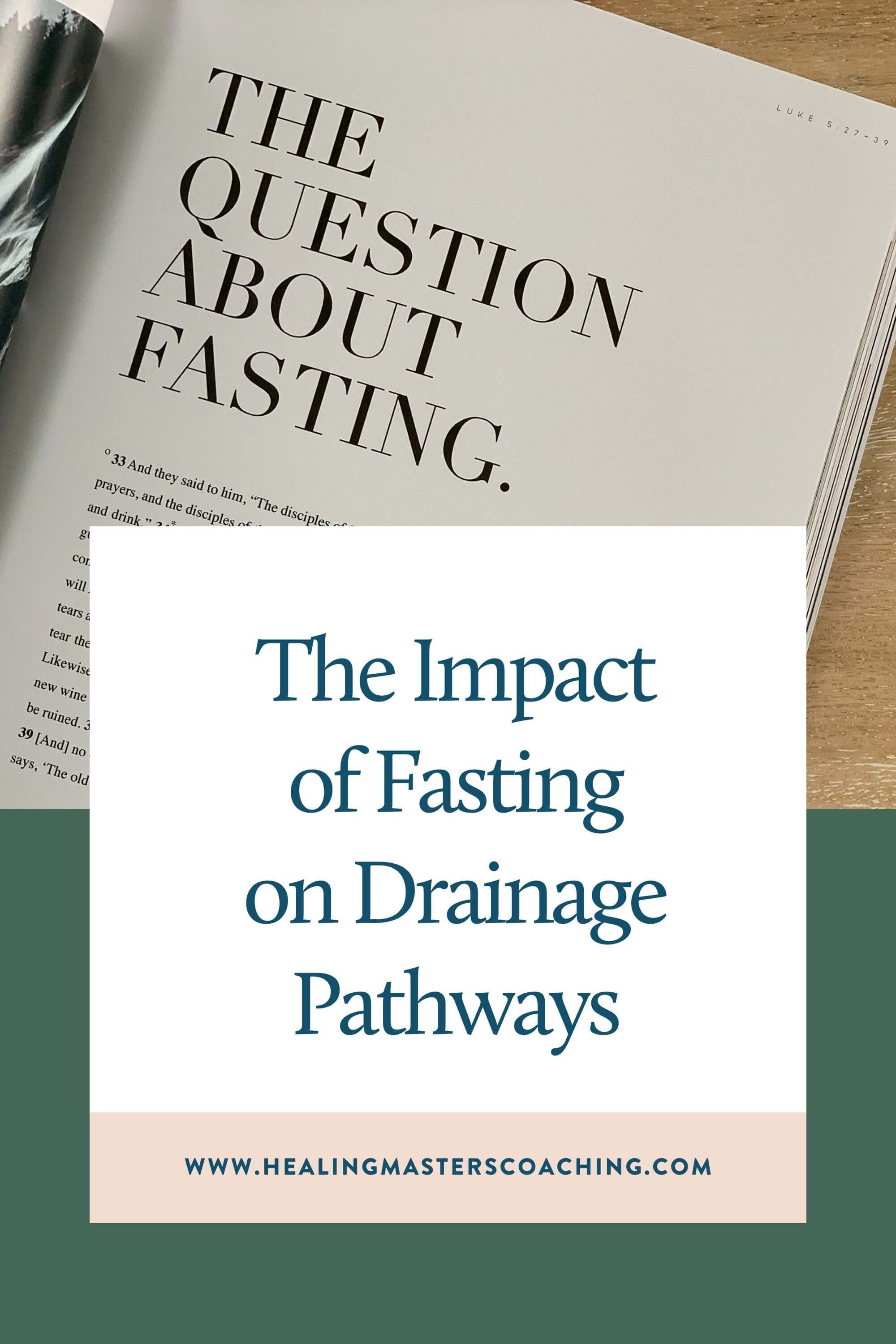Neurological Symptoms Of Mold Exposure: 5 Things You Must Know
Are you experiencing balance and coordination issues, brain fog, or vision disturbances? You’re trying to figure out what the heck is going on in your body and your doctors are doubting your sanity. You had other mysterious symptoms going on, but these neurological issues are at a new level.
I know what it’s like. A couple of years ago, I was experiencing new symptom after symptom that would come and go and change in intensity, and I didn’t know what was wrong with me. Working with a functional medicine provider helped me uncover that I had neurological symptoms of mold exposure and chronic lyme disease.
If your neuro symptoms aren’t going away and you’re coming up empty-ended, it’s time to consider if they could be explained by mold illness. If you suspect your symptoms are from mold, there are 5 things you need to know as you dive into your healing journey.
1. Neurological Symptoms Of Mold Exposure:
The most common mold exposure symptoms include respiratory symptoms such as coughing, runny nose, sneezing, shortness of breath, asthma attacks, sinusitis, bronchitis, and pneumonia. But mold also causes more severe issues that impact your cognitive ability, mood, and behavior.
The neurological symptoms of mold exposure include:
Anxiety
Balance and coordination issues
New asthma or worsening of current asthma symptoms
Memory Loss
New vision problems
Brain fog
Aggression
Confusion
Hard time breathing
Infections of upper airways
Apathy (lack of emotion, motivation, or interest of things)
These symptoms appear because mycotoxins (toxins released from mold spores) cause brain inflammation. When your brain is inflamed, it can impair functions and cause harmful imbalances. Mold spores and mold have harmful effects on indoor air quality. Mold exposure is especially dangerous for people with weak immune systems, allergies, or asthma.
2. You May Be More Susceptible to Mold Symptoms
Not everyone may react to mold exposure the same way. The kinds of neurological mold symptoms vary from person to person and the severity does as well. Some people’s bodies can detox from mold and mycotoxins rather quickly (especially if the mold exposure wasn’t over a long period of time), while other individuals genetically don’t have that innate ability to detox from mold. Their body acts like a sponge and holds onto all the spores.
Some people (about 25% of the population) don’t make the antibodies that tell the immune system to get the mold toxins out of the body. Because of this, mold toxins begin to accumulate in the body. If you’ve been unknowingly exposed to mold for a long time, your body is going to acquire much more mold toxicity than if you were exposed for a short time. This is why one person in your home could experience neurological symptoms of mold exposure and another person be perfectly fine.
Every single person has been exposed to mold at some point in their life. Latest estimates say that around 70% of homes have mold, which is pretty scary for the 25% of people who are genetically predisposed to have mold illness. Mold is also commonly found in office buildings, hospitals, nursing homes, and schools. An EPA study revealed that 85% of homes in the U.S. have had past water damage, and 45% have a current water leak.
Most people don’t know they have mold. Mold can be hiding in places you never even thought to look. While it could be in lurking in common places that mold loves to flourish in (dark and wet places), like bathrooms and basements, mold could also be hiding behind your walls (even in newer homes) and even in food products. There are so many places mold could be hiding in your home. Mold spores can develop as soon as 24 hours after water exposure or damage.
3. You Can Test for Mold In Your Home
Are you wondering if mold is in your home? Are you concerned about the effects of water damage on your health? We recommend the simple and affordable ERMI Test as a starting point for anyone concerned with water damage, mold, or mycotoxins in their indoor spaces.
These tests work by collecting dust on a small plate, which is then sent in for testing for the presence of common indoor molds. These tests give a good starting point for determining if your home has a mold problem. This is because mold spores (and bacteria particles that colonize with them) attach to dust and use them as a medium to live and travel on,
If the test returns positive, we recommend consulting with a professional and reputable mold remediator, like PJ Harlow or Michael Rubino. It’s very important to remediate your home properly to prevent the problem from worsening despite your efforts.
Generally speaking, you will need to remove yourself from the moldy environment before you can heal from mold. We ended up having to move, but some homes can be remediated.
4. There Are Health Tests for Mold Exposure & Toxicity
If you suspect mold exposure, it is best to test and not guess, because each mycotoxin has slightly different treatment strategies. At Healing Masters Coaching, we offer several specific root cause testing kit options, including mold /mycotoxin testing, that can help you understand if mold exposure is the root cause of why you’re feeling unwell.
Once we determine that mold toxicity is the underlying cause (or one of the underlying causes), we create personalized protocols that help your body eliminate the mold and feel well again.
Click here, to learn more about our process of how we address mold toxicity in patients also dealing with MCAS symptoms.
5. Neurological Symptoms Of Mold Exposure Should Be Addressed ASAP
If mold toxicity goes unaddressed, it can manifest into more severe neurological complications. It can weaken your immune system, leaving your body vulnerable to outside invaders like bacteria, viruses, and infections. You may notice that you become sick more easily, or your symptoms become aggressively worse.
In his book “Inhalation Alzheimer’s,” Dr. Bredesen shares that patients developed Type 3 Alzheimer's after prolonged exposure to mold. He classifies Alzheimer’s caused by inhaling mycotoxins as “an unrecognized and treatable pandemic.” If you are experiencing any cognitive decline symptoms, we recommend testing for mold exposure and treating it as soon as possible.
Mold toxicity occurs when you’ve been exposed to mold toxins and the toxins attach to your cells. What happens is that stressors can bump those toxins off your cells, travel through your bloodstream, and come into contact with your mast cells, activating them. This leads them to release inflammatory mediators that cause flare-ups.
Another issue is that mold toxicity can lead to Mast Cell Activation Syndrome and Postural Orthostatic Tachycardia Syndrome (POTS), which are becoming increasingly more common in recent years.
Closing Thoughts
Understanding the neurological symptoms of mold exposure is crucial in navigating the complexities of chronic illness. From balance issues to cognitive impairments, the impacts of mold toxicity extend far beyond the often-discussed respiratory symptoms. This deep dive into the subject illuminates the pervasive nature of mold's influence on health, underscoring the importance of addressing mold exposure and toxicity promptly. Whether it's through home testing, professional remediation, or personalized health protocols, taking action against mold is a vital step towards reclaiming your health and wellbeing. Remember, mold exposure's neurological ramifications are a call to action, urging us to seek solutions and protect our health in our environments. If you enjoyed this blog and want to learn more, be sure to check out our other blogs on Toxicity and more.
Overcome Your Chronic Symptoms & Heal Holistically
Are you looking to get to the root cause of your symptoms? We can help you.
We use holistic approaches and functional medicine lab testing to investigate what is triggering your chronic symptoms so you can address them at their source and start to feel better faster. Our health coaches are masters at guiding the healing of multiple root causes in a personalized order that gets you wellness results that last. We also help you maintain good health and minimize your disease risks.
by sarah southerton
Certified Integrative Health Practitioner (IHP2) & Functional Medicine Health Coach
I specialize in helping people heal chronic illnesses and achieve optimal health. After my own battle with Ehlers Danlos Syndrome (EDS), Lyme disease, Mast Cell Activation Syndrome (MCAS) and Post Orthostatic Tachycardia Syndrome (POTS), I was thrust into the world of alternative medicine, herbal healing, and low-tox/low-stress living. I have since restored my health and no longer suffer with debilitating symptoms and I’m passionate about help other people who are suffering, so they can feel better a lot faster than I did.
Disclaimer: The information on this website is for general information purposes only. Nothing on this site should be taken as healthcare advice for any individual case or situation. This information is not intended to create, and receipt or viewing does not constitute, an healthcare professional-patient relationship. We do our best to keep information accurate and up to date, however mistakes do happen, and we cannot make guarantees regarding the accuracy of our information. We are not liable for any information on this website or your reliance upon it.
































